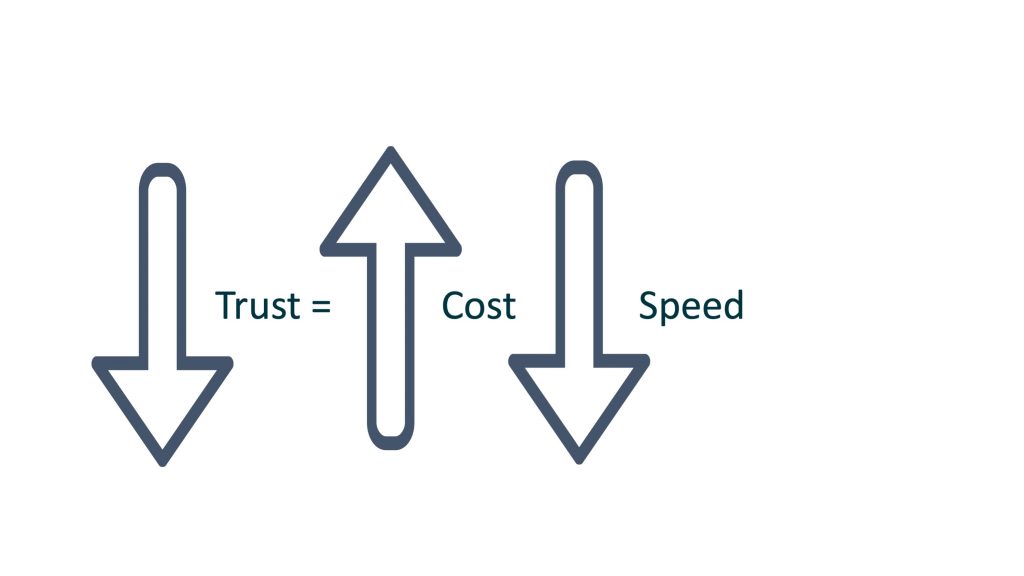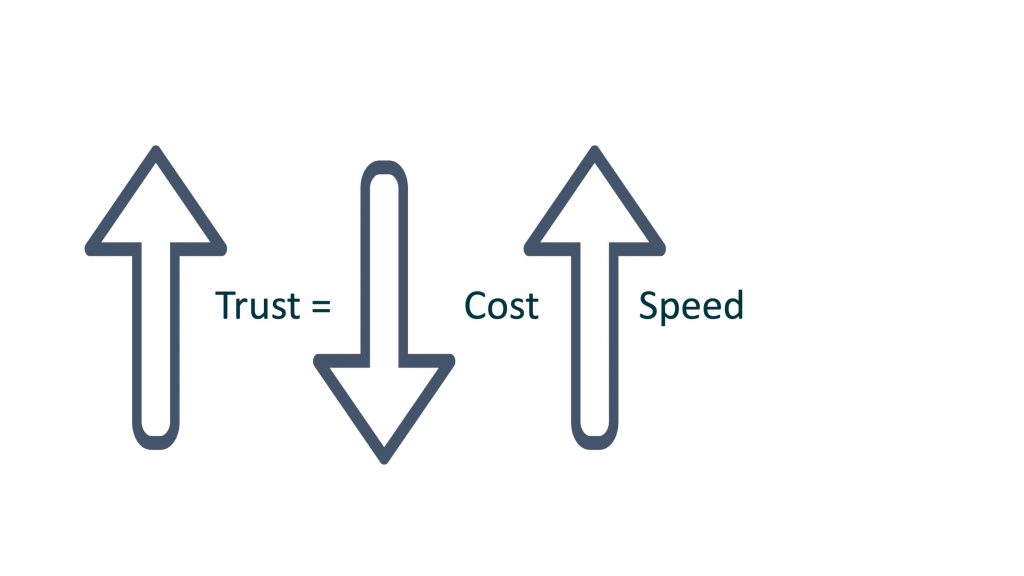Trust and transparency are talked about a lot. Bård Kuvaas, a professor in Organizational Psychology at BI Business School in Oslo, Norway, argue that “trust is more than intensive management and control, leaders who give more trust get more motivated employees in return. “
Employees whom experience trust are often:
- Less stressed
- More productive
- Have less sick absences
“TRUST is more than intensive management and control. Leaders who give trust get more motivated employees. They become less stressed, more productive, and have less sickness absence than others. A lot is about being involved in tasks and challenges at work. When we seize this chance, because it’s obvious there’s uncertainty in the picture, the people we show trust experience JOB AUTONOMY. TRUST is a competitive advantage!“
Bård Kuvaas
For this reason, Kuvaas argue that trust can be a competitive advantage. We argue that transparency is part of trust. Trust can be gained through transparency and transparency can be attained or achived due of trust.
All employees are involved in challenges at work, having transparency can allow them to understand the challenges better, hence make better decisions. With the right information, which has been given due to trust and transparency, employees can be entrusted with more autonomy to make even more decisions and face challenges.
This, of course, does come with some risk because it requires that you begin to trust your employees more which comes with uncertainty.
With that in mind, Stephen Covey and Greg Link write in their book Smart Trust that what is required is the type of trust they call Smart Trust.
Smart trust is when one has a willingness to trust but exercises analysis. This means that rather than trusting blindly one must be conscientious in who they give their trust to.
Covey and Link argue there are five steps that must be taken to employ this strategy:
- First, you have to believe in the strategy of giving trust, you have to believe that it is the correct action for it to be effective.
- Secondly, you must have trust for others within yourself.
- The third step is that you state your purpose and be transparent about your reasons for doing the things that you’re doing and maintain a positive and optimistic outlook that you will get the same in return from your employees.
- The fourth step is that you be sure to stand by your word and have strong integrity so that you give your employees reason to trust you in return.
- Finally, the fifth step is that it is your responsibility in leadership to initiate the spread of trust.
Another aspect of trust that is discussed in Smart Trust is called the Speed of Trust.
Check out our Master class on Udemy! Now only $9.99 instead of $199.99!
Speed of Trust
Speed of trust is the idea that having a culture of trust within an organization allows it to run faster and more smoothly. In many organizations employees’ work must be checked or have their decisions verified, these are referred to as checkpoints within the organization.

More employees and less trust mean more checkpoints are required to confirm that the needed work is being done correctly. More checkpoints means slower function or operation within the organization. In addition to slower operation, more checkpoints mean higher operating costs as well.
More trust, however, means eliminating checkpoints because you give your employees enough autonomy to do their job and have faith that they will do it, and those that would be checking have more time to perform the necessary functions of their jobs.

Fewer checkpoints, in turn, means higher operational speed, which can translate into bringing products to market faster. In addition to the increase of workflow in the organization, more trust then also means lower cost, since in removing checkpoints you have also relieved some of the burdens of work off of your employees, and is able to move faster.
Trust also has the ability to increase transparency, increasing trust will also allow for an increase in transparency. Trust and transparency have a strong and direct relationship in that more trust allow for more transparency, but then more transparency can also create more trust and each one can feed and promote the other.
As we stated before there is an amount of risk involved in this approach and it’s because of this risk that it is the responsibility of you, the leadership to start the movement towards more trust in the organization so that your employees will follow your lead.
The best way to get this cultural shift started is through transparency and initiating trust.
An unexpected story about trust
General Stanley McChrystal was in charge of the US forces in Iraq and Afghanistan after 9/11. In the fight against Al-Qaida and the extremists. General McChrystal used trust and transparency in the US Army to a tremendous extent, he saw great success with it, and completely changed the way they operate.
General McChrystal applied trust strategies through many means but largely through the use of extreme transparency and a very high degree of information sharing.
“…sharing information would help build relationships and the two together would kindle a new, coherent, adaptive entity that could win the fight.”
U.S. Army General Stanley McChrystal
The military is an organization that is not well known for it’s transparency, in fact it’s quite the opposite, they have probably the greatest reputation for secrecy rather than open information sharing.
As leaders of an organization it’s worth considering that if the US military can implement this kind of transparency and trust culture, it’s worth considering for use in your own company.
It is worth considering being more open with colleagues about what projects we have, what tasks, decisions, challenges etc. Simply being more open with coworkers will in addition to creating more trust and operational speed also help you if you are stuck on some aspect of your problem. Sharing it with a colleague and discussing that hurdle may lead you to discover that your colleague can actually help you with your problem, look at it from another angle, or know about a workaround.
I’d like to wrap this up with a quote and reference to Gandhi himslef
“Be the change you want to see in the world”
Mahatma Gandhi
It is mine and yours responsibility to initiate this change; we must be the change we wish to see, including within our organizations.
If you want to see a work environment and culture that is based on trust and transparency, the change must begin with you.
Take a minute and think about how you could be more trusting and transparent in your daily work?




